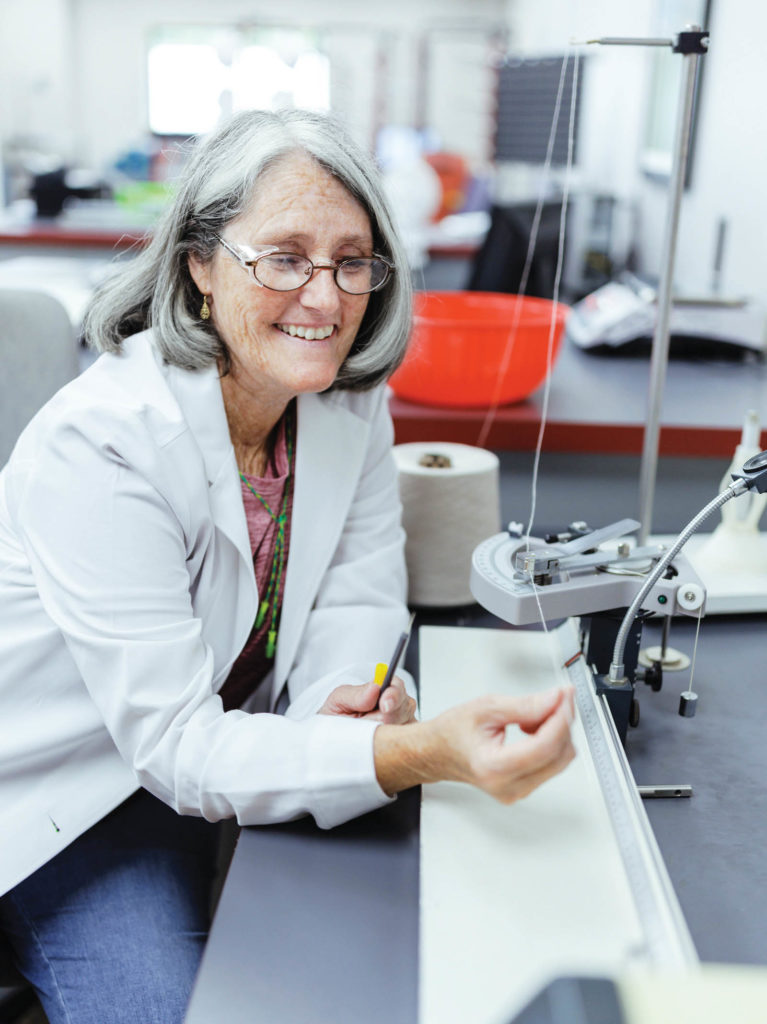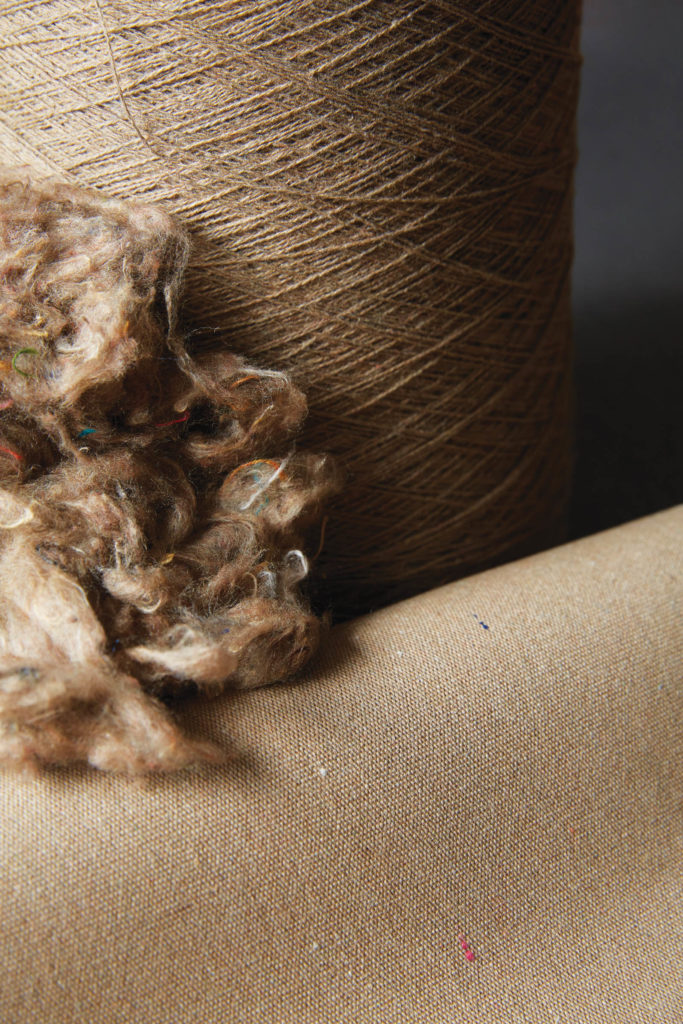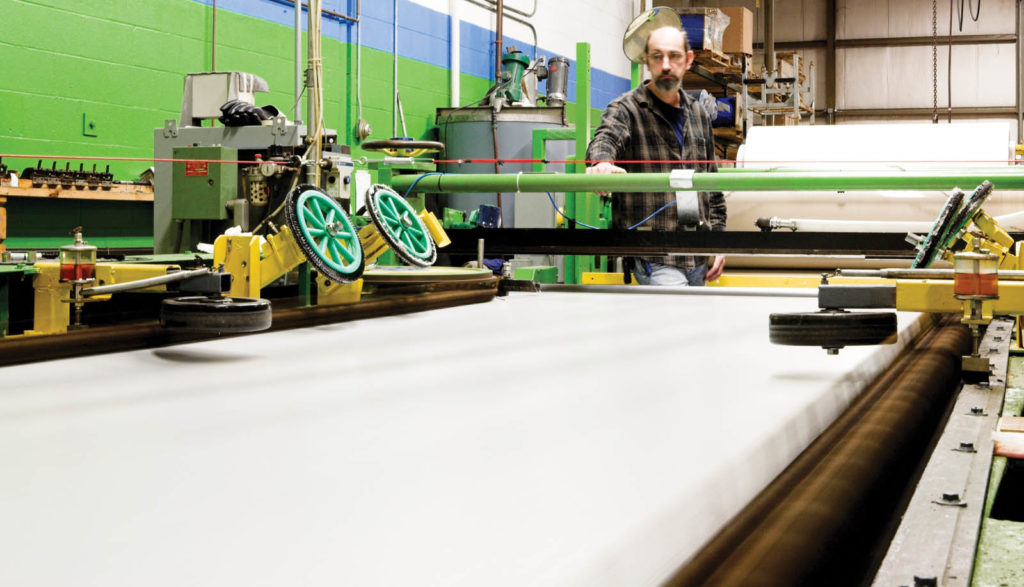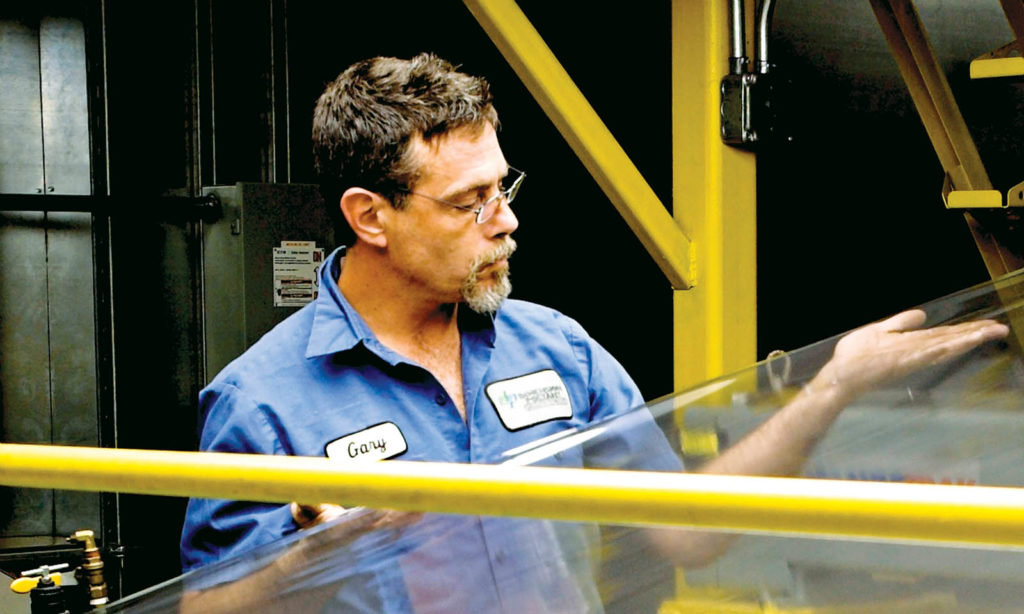
As public awareness of the importance of sustainability grows, there’s no doubt that fabricators are becoming greener. But it’s also becoming obvious that there are many different routes to the same destination.
Take the cases of two companies—Dimension-Polyant Inc. and Glen Raven Inc.
Glen Raven Inc., a major manufacturer of textiles for a variety of markets, including awning, marine, furniture and protective, headquartered in Burlington, N.C., released its first corporate sustainability report in 2021. The report was published
to “continue to challenge ourselves to be an even stronger champion of sustainability,” says CEO Leib Oehmig.
It noted the company had transitioned to using 25% renewable energy and reduced its carbon emissions by 33%. “We intend to increase our usage to 50% for 2023 and continue increasing each year to achieve our goal of becoming 100% powered by certified renewable electricity by 2025,” says Oehmig.
Dimension-Polyant Inc., one of the world’s largest sailcloth makers, has two facilities—one in Kempen, Germany, and the other in Putnam, Conn., and last year they were both certified as climate-neutral. According to Taylor North, the company’s head of technical fabrics, “Our overarching goal here is to reduce our environmental impact whenever we can. But it’s also important to maintain quality. If we sacrifice quality in the interest of sustainability, we see that as
a step backwards.”
Approaching the task
The two companies have approached the task in both similar—embracing a switch to renewable energy—and different ways.
One of the first things Dimension-Polyant did toward its certification, says North, was to switch its electricity and natural gas to renewable sources about three years ago. The electricity is now all wind- or solar-powered and the natural gas is green (from organic waste sources or climate-neutral).
“We reduced our carbon footprint through these programs, whether it’s energy sourcing or LED lights or those kinds of things, so we can reduce our power impact,” says North.
As of 2022, Glen Raven is using renewable electricity for 25% of the power demand across its facilities and offices by matching this power with renewable energy certificates from sources like hydroelectric, solar and biomass.
“As we invest in renewable electricity, it is also a priority for us to use this energy efficiently and wisely,” says Oehmig. “We continually work to reduce the amount of electricity needed to run Glen Raven’s operations.
“A good example of energy conservation was implemented in the recent expansion of our factories with the purchase of the most energy-efficient weaving looms ever produced by our machine vendors,” he continues. “These looms feature innovative technologies that use machine learning to adapt to conditions and improve fabric quality while also using less compressed air and less electricity. The impact is a 36% reduction in energy needed to weave each yard of fabric.”

Carbon offsets
Use of renewable energy is just one of many methods used to reduce a company’s carbon footprint. Another is through the use of carbon offsets. These have a different purpose, explains Oehmig, as they “focus on the impacts of consumption of petroleum-based fuels such as natural gas, propane and diesel fuel. Offsets can be an investment in validated carbon-reduction projects to balance out the carbon emissions of those consumed fuels. This practice is undergoing rapid evolution and policy development.”
Glen Raven sees carbon offsets as a future business strategy, according to Oehmig, and is focusing its short-term efforts on conserving fuel and seeking technology improvements such as electrification.
Dimension-Polyant is more active in using carbon offsets. “Where we cannot reduce, we offset our carbon footprint with carbon offsets,” says North. The company does so in partnership with a company called ClimatePartner.
“They broker the offset, which is achieved through funding wind power projects around the world,” he explains. “For example, on islands that would typically rely on a diesel generator, ClimatePartner funds windmills so that these islands can operate without use of fossil fuels.”

Explaining climate-neutral
To help consumers identify its eco-friendly products, Dimension-Polyant has developed the cleenTEC® seal. Materials carrying the cleenTEC seal are guaranteed to have been manufactured in climate-neutral production facilities and include one or more environmentally friendly innovations.
“A lot of people are excited about cleenTEC,” says North, “but it takes a little bit of explaining to tell the story of what climate-neutral means and how to achieve it with a fabric. Other companies out there say ‘We’re reducing our carbon footprint by using recycled fabrics,’ which is great, but only goes part of the way to reducing the actual environmental impact of the fabric. We go that much further to certify the fabric carbon-neutral. All the inputs—transportation, energy in manufacturing, waste, etc.—are calculated in the impact and then offset with the wind power and ocean cleanup projects.”
Becoming climate-neutral is not an easy or cheap thing to do, says North. “It’s a lot of manpower to go through each one of our products and figure out the carbon footprint. We make a thousand different products in these facilities each year.
“But we’re keenly interested in keeping the environment clean and that’s important to key customers—sailors, hikers, mountaineers, wind surfers, hang glide pilots,” he explains. “We understand our customers appreciate it. Certainly, it’s not the cheapest way to make fabric. It costs a lot to do what we’re doing, but it provides value to our customers.
“People appreciate us going the extra distance, reducing our impact where we can, and doing all these calculations and audits,” he adds. “We have a small office here, but an office full of sailors and people who enjoy the outdoors. We want to go the extra mile to make sure we can be as clean as possible.”

The cost of renewables
Switching to renewable energy seems like a good way to avoid exposure to the sort of extreme price increases in electricity and natural gas experienced by companies in the U.K. and EU this year due to Russian sanctions. Germany has been hit particularly hard, with energy prices rising tenfold in just the last year, forcing many factories and businesses to shut down and sparking fears of a deep recession. However, despite using 100% renewable electricity, Dimension-Polyant’s facility in Germany has still been subject to those same massive increases in costs for electricity, which is tied to the price of natural gas.
In fact, according to North, the rate of increase in renewable electricity mirrors the increases in fossil fuel-based sources—meaning the renewable power is not any cheaper than fossil fuel sources. “Renewable power is still limited in supply, in relation to fossil fuel sources,” he says. “Someday, when there are millions of wind turbines and many thousands of acres of solar arrays, there may be a glut of renewable electricity which would push the cost to the consumer lower.”
But regardless of the cost, says North, “we believe it’s the best way for the ethos of our business, and of course, the environment.”
At Glen Raven, Oehmig says: “Sustainability is a central value that defines our culture and determines the footprint of our products. All Sunbrella® fabrics are created with the utmost thought and care for the environment and our communities while being fundamentally engineered for a long and useful life, meaning they need to be replaced less often.
“Renewable electricity is a choice we can now make,” he adds. “It’s an important part of our decades-long commitment to reducing our impact on the planet.”
Jeff Moravec is a freelance writer based in Brooklyn Park, Minn.
 TEXTILES.ORG
TEXTILES.ORG


